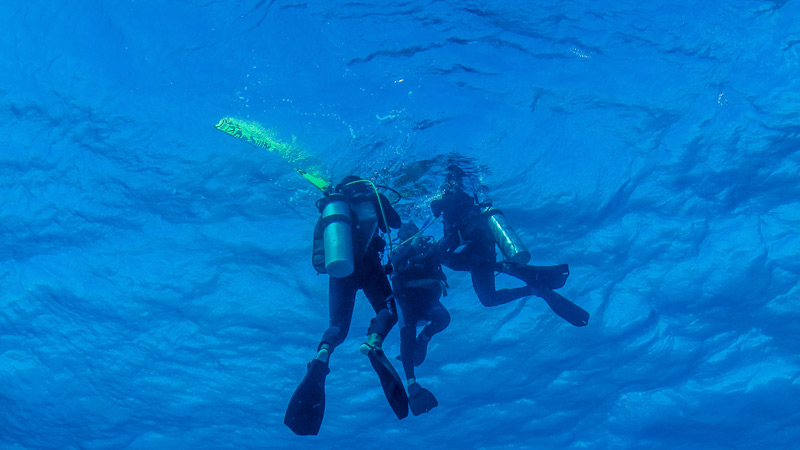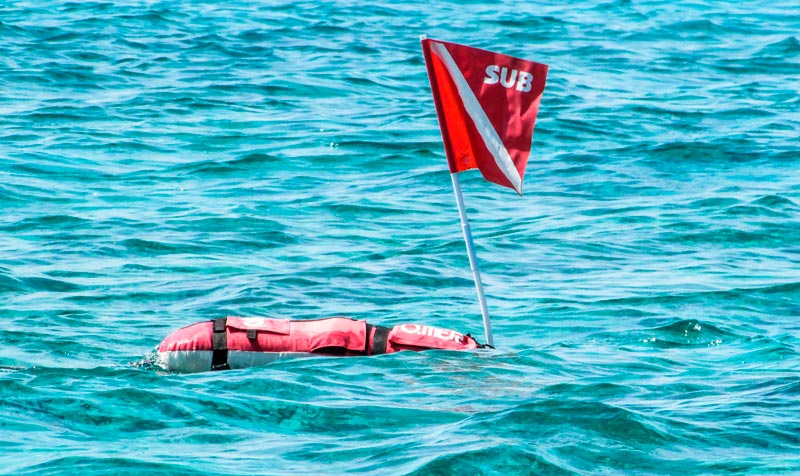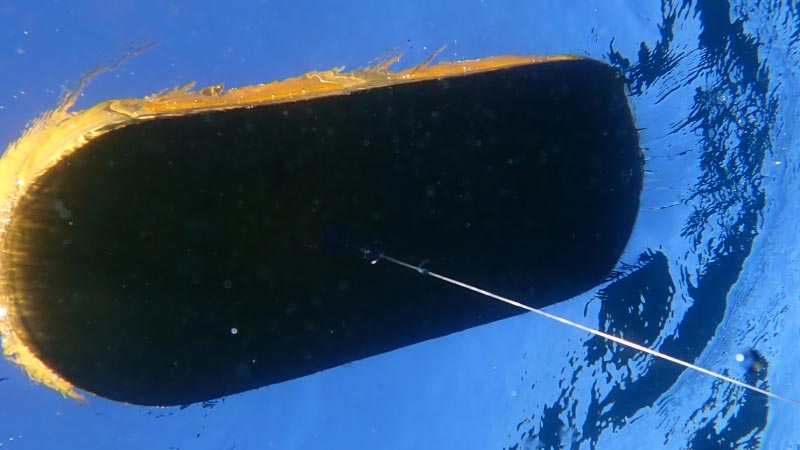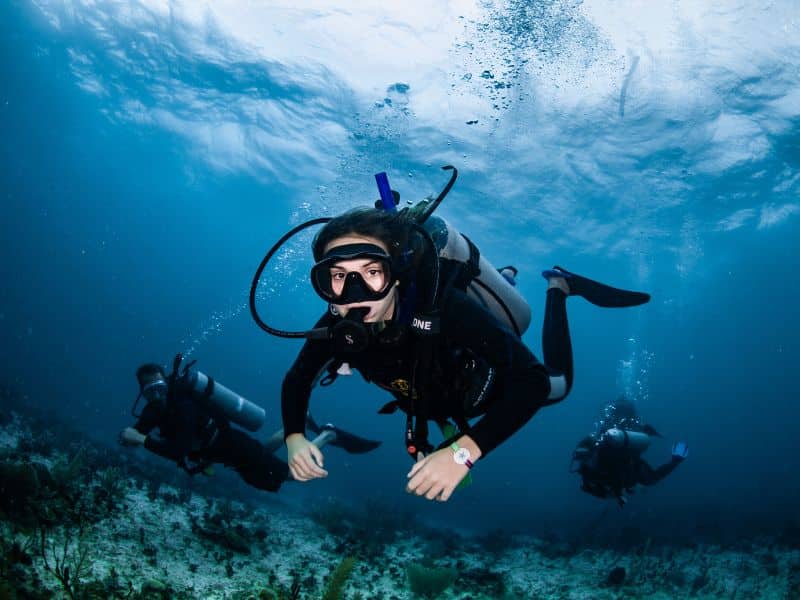3. What is a Divers Buoy Used For?
The primary function of any diving buoy is to mark the diver’s position.
When it is a permanent diving buoy it allows the boat to follow the group and pick them up when they finish the dive. This is very useful on drift dives and night dives.
At the same time, it indicates to the rest of the boats that there is a group of divers underwater and that they must refrain from going over it because they can ascend at any time.
Another way divers use surface markers is as an identification point for sites of interest. Thus, the dive surface marker is attached to the submerged object until someone recovers it. Police and military rescue divers use this technique widely to rescue bundles of drugs, bodies, or whatever they look for on the seabed.
In poor visibility conditions, permanent dive buoys serve as a guide to locate your way to the surface.
In some emergency cases, scuba divers use safety marker buoy to help to ascent to the surface.
The delayed surface marker buoy also has the function of marking the position of the diver. However, it only inflates when the diver is submerged, so the tribulation of the boat that must pick him or her up will know if he has deviated from the intended site. At the same time, that dive marker buoy makes the group of divers visible if the sea is rough or there is little visibility.
Tec divers use diving DSMB to hold positions while making decompression stops.
-
Are Diving Markers Always Necessary?
A surface marker buoy is always recommended except in cave dives and ice dives, which are not useful because there is no direct ascent to the surface.
In all other diving, a scuba diving SMB is necessary and a good safety measure.








